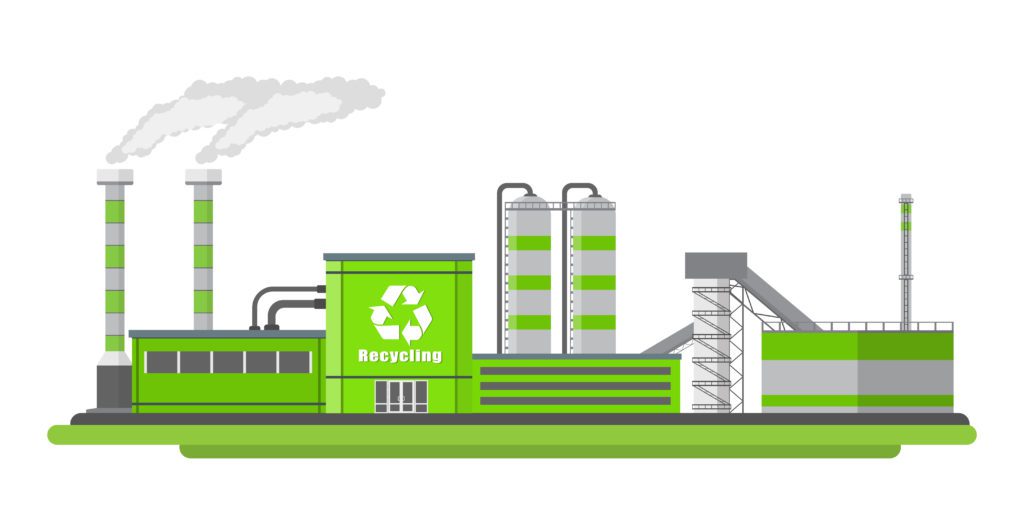When possible, we try to look into recycling components of a roof system. Not only does it help us reduce the amount of debris going into a landfill, but, in some rare cases, it can also provide cost savings. It all depends on what type of roof system and insulation you are removing.
Roof Projects to Consider:
As a general rule, it is hard to recycle components that are under an asphalt roof system, like modified bitumen or built up. The reason being that removal of these roof systems is not a delicate process. Cutters, ripping spades, axes, etc. are used to break apart the roof system, and the underlying insulation is typically damaged also.
Fully adhered roofs can also prove challenging since the face of the insulation is typically damaged while the membrane is being removed. This causes the insulation to sustain damage, and the membrane has parts of the insulation adhered to it, making it non-recyclable.
Mechanically attached roofs can be good candidates, depending on how they are installed. In some cases, we can completely remove the fasteners and take apart the roof system, making all components reusable. In other cases, we can leave the membrane fasteners in place, and recycle everything around it.
Ballasted roofs tend to be the best candidates for recycling. Once the ballast stone is removed, the underlying roof system is loose, making full removal easy with complete pieces. If a ballasted roof has the right insulation under it, and it is in good condition, recycling can be ideal.
Roof Products to Consider:
Unfortunately, only a handful of roofing products are ideal candidates for recycling. These products include:
- Polyisocyanurate Insulation: If in good condition, polyisocyanurate insulation can be removed from a roof system and reused in other applications. In a perfect world, it is removed in full sheets with the facer still completely attached. Also, to be reused, polyisocyanurate cannot be wet or damaged.
- EPS Insulation: Similar to polyisocyanurate, EPS insulation in good condition can be removed and reused in other applications. The difficult part about EPS insulation is that, if damaged, it can break apart into smaller particles that end up everywhere. As a result, care must be taken during the removal to minimize damage to the EPS.
- Non-reinforced EPDM: In some cases, the non-reinforced EPDM membrane can be recycled. I’ve been told that, without the reinforcing fabric, EPDM can be reused in several non-roofing applications. Typically, there can be an additional cost to recycling EPDM versus throwing it out, so the cost needs to be weighed versus the benefits.

The Recycling Process:
Unfortunately, recycling a roof system can be more labor-intensive than disposal. With disposal, the roofing products are typically cut up and thrown in a dumpster. With recycling, the product often needs to be left in full sheets. They also need to be bundled, and in some cases, carefully hand loaded into a truck. This can take a lot more time to complete and usually offsets any cost savings. In many cases, the extra work ends up costing more than the recycling savings. So, unfortunately, at this point, recycling is typically more expensive than disposal.
If you are interested in recycling your roof system, talk to your roofing contractor about it. Ask what your existing roof system consists of, how it was installed, and the cost of recycling the roof system, if possible. Just be prepared that the cost may go up or down depending on any or all of these factors!
Call Us
At Chaffee Roofing, we have all the years of experience to benefit your company.
We can help you to install a greener commercial roof for your business and save you money while doing so.
Call Chaffee Roofing today and let us help you go green.
